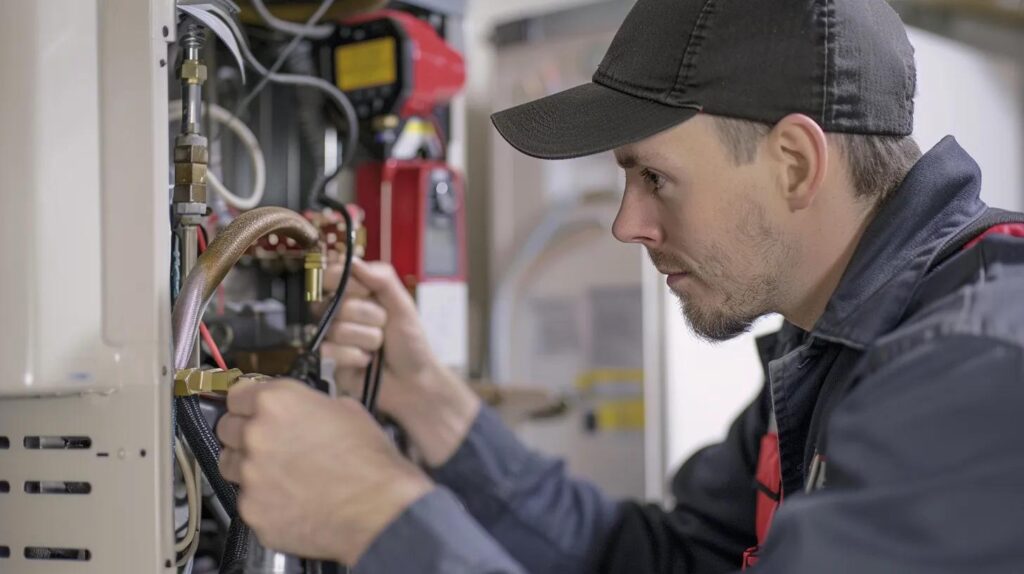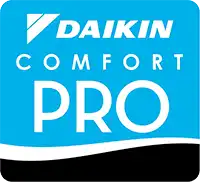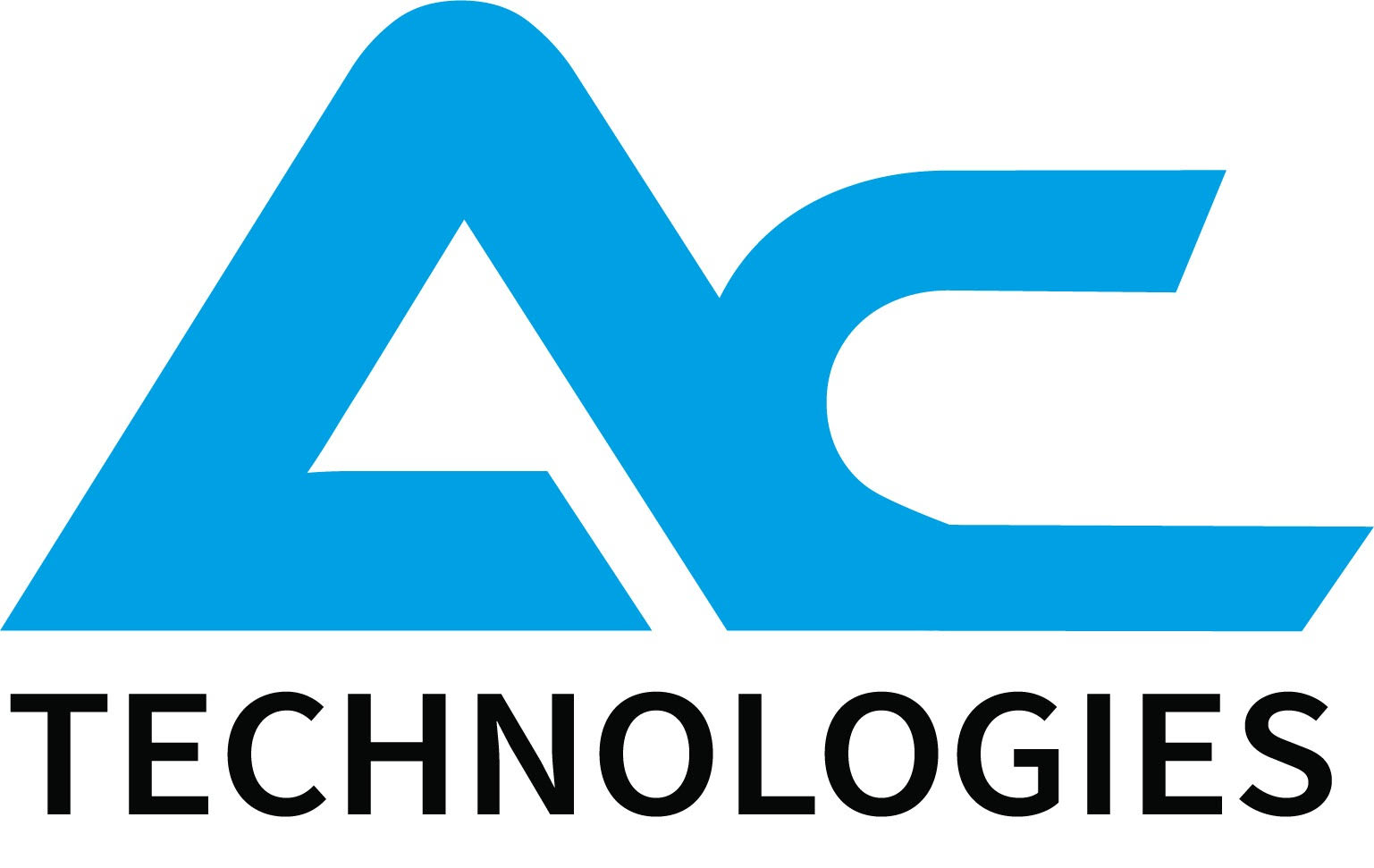Troubleshooting a Furnace That Isn't Heating: Easy Solutions

How to Troubleshoot a Furnace That Isn't Heating: Practical Fixes and When to Call a Pro
A furnace that won’t heat leaves your home uncomfortable and can be unsafe. This guide helps you quickly narrow down the problem so you can restore warmth or know when to call a technician. We explain what “furnace not heating” really means, list the most common causes—from thermostat and filter issues to ignition and airflow problems—and give safe, step-by-step checks you can do at home. You’ll learn how to spot simple fixes (like a dirty filter or thermostat setting), recognize component failures (such as a bad ignitor or flame sensor), and identify warning signs that need emergency service. We also cover maintenance tips to avoid future breakdowns, cost factors for repair versus replacement, and financing options. Read on for straightforward checklists, clear reference tables, and guidance for scheduling service in Monrovia and the Greater Los Angeles area.
Why Is My Furnace Blowing Cold Air Instead of Heat?
When a furnace blows cold air it usually means air is moving but combustion heat isn’t being produced or delivered. That can happen because the thermostat isn’t calling for heat, the ignitor or pilot won’t light the burners, or restricted airflow forces the fan to run alone. Knowing these root causes helps you run quick, safe checks that often restore heat without major repairs.
Try the simple homeowner checks below to see whether the issue is a control, ignition, or airflow problem, and learn the next steps if those checks don’t fix it.
- Check thermostat mode and setpoint: make sure it’s set to “Heat” and the temperature is higher than the room.
- Look at the furnace filter — if it’s dirty, replace it; restricted airflow can trigger safeties and cause cold air.
- Make sure vents and registers are open and not blocked so warm air can circulate.
If these quick checks don’t bring back heat, the issue is often at the ignition or safety-interlock level and will need deeper component testing. The following sections explain the common causes and how each one leads to cold airflow.
What Causes a Furnace to Blow Cold Air?
Thermostat problems are common — it might be set to “fan only,” have dead batteries, or have lost power so the furnace never gets a heat call. Ignition failures, like a cracked hot-surface ignitor or a bad pilot assembly, stop the burners from lighting; the blower keeps running but no combustion occurs. Clogged filters or blocked vents restrict airflow and can trip limit switches, which shuts the burners off to protect the heat exchanger. Each cause has telltale signs — blower running with no heat, control-board error codes, or visible pilot/ignitor issues — that point to the right homeowner checks and when to escalate to a technician.
Understanding these component behaviors leads directly to practical fixes and clear safety stop-points, which we cover next.
How Can I Fix a Furnace Blowing Cold Air?
Start with the safest, easiest steps: confirm the thermostat is set to heat and replace any dead batteries, swap a dirty filter for a fresh one, and make sure supply and return vents are clear. If your furnace has a standing pilot and you’re comfortable following the manufacturer’s relighting procedure, do so only after checking for gas odor. For modern electronic ignition systems, try a simple power cycle: turn the thermostat off and switch the furnace power off for about 60 seconds, then restore power. If the furnace shows control-board error codes, the ignitor glows but the burners don’t light, or the unit repeatedly locks out, stop and schedule a professional diagnosis — those signs usually mean ignition components or gas controls that need a technician and gas-safety testing. Many DIY fixes restore warm air in minutes to an hour; persistent problems or any gas-safety concerns mean call a licensed HVAC pro.
What Are the Most Common Furnace Not Heating Problems?
Common reasons a furnace won’t make heat fall into controls, ignition, airflow, and safety systems. Working through likely causes in order helps you save time and avoid replacing parts you don’t need. Typical failures include thermostat or wiring faults, clogged filters or restricted ducts, ignitor or pilot problems, blower motor or control-board faults, and flame-sensor or safety-switch shutdowns. The table below matches symptoms to likely causes and quick homeowner checks to streamline troubleshooting.
| Symptom | Likely Cause | Quick DIY Check |
|---|---|---|
| Blower runs but air is cold | Ignitor/pilot failure or thermostat set to fan-only | Confirm thermostat set to Heat, look for ignitor/pilot activity, power-cycle furnace |
| Furnace cycles on/off rapidly | Clogged filter or restricted airflow causing overheating | Inspect and replace filter, make sure vents and returns are open |
| No power or display on furnace | Power loss or tripped breaker | Check furnace switch, home breaker panel, and power switch at the unit |
| Burner lights then goes out | Dirty flame sensor or gas supply issue | Note any error codes; cleaning the flame sensor often fixes shutdowns |
Many of these issues can be fixed by homeowners with focused checks. Repeated lockouts or any gas-related signs should be handled by a trained technician for safety.
How Does a Faulty Thermostat Affect Furnace Heating?
A bad thermostat can stop the furnace from ever getting a heat call. Problems include wrong mode settings, lost power, failed internal relays, or wiring faults. Test by setting the thermostat to Heat, raising the setpoint well above room temperature, replacing batteries if needed, and watching for a response from the furnace. For smart thermostats, verify power and Wi‑Fi, and check schedules or “hold” settings that might override heating. If the thermostat looks fine but the furnace still won’t respond, the issue may be at the wiring or control-board level — and that’s a good time to call a pro.
Remember: even a perfectly working thermostat can’t restore heat if the furnace is locked out by airflow-related safety switches — which is why filter and vent checks matter.
Could a Clogged Furnace Filter Be Causing No Heat?
A clogged filter restricts airflow, which can make the furnace overheat and trip limit switches that shut the burners off. Check the filter orientation and type, remove it, and inspect by eye — if it looks gray, full of dust, or blocked, replace it with the correct size and rating and install it in the proper airflow direction. How often you change filters depends on the filter MERV rating and household factors; many homes benefit from a monthly check and replacement when visibly dirty. Replacing a badly clogged filter often brings the system back to normal and prevents short-cycling that stresses motors and controls.
Filter care is one of the fastest preventive steps and, combined with thermostat and vent checks, solves many “no heat” calls without further repair.
When Should I Call a Furnace Repair Service for Heating Issues?
Call a qualified HVAC technician when warning signs point to gas, combustion, or major component failure — and to avoid unsafe DIY attempts. Emergency signs include any gas odor, carbon monoxide alarm activation, complete heat loss during dangerously cold weather, visible flame instability, or repeated control-board lockouts after basic troubleshooting. Urgent but non-emergency signs include unusual mechanical noises, ongoing short-cycling after a filter change, water or condensation leaks near the unit, and persistent error codes after power cycles. Before a service visit, document symptoms, any error codes, and recent maintenance to speed diagnosis and repair.
If you smell natural gas or your carbon monoxide alarm sounds, take these immediate safety steps:
- Evacuate: Get everyone out of the building and keep a safe distance.
- Do not operate electrical switches: Avoid anything that could spark.
- Shut off gas supply only if you know how and can do so safely; otherwise wait outside.
- Contact emergency services or a qualified HVAC company right away.
What Are Signs That Require Emergency Furnace Repair?
Emergency signs needing immediate professional action include a strong gas smell, a triggered carbon monoxide alarm, visible flame irregularities or backflow at the burner, or complete heat loss in freezing conditions putting occupants at risk. If you suspect a gas leak, evacuate and call emergency services — don’t try DIY fixes, and avoid anything that could create a spark or flame. A carbon monoxide event requires fresh air, possible medical attention, and inspection by a certified technician to check combustion, venting, and heat-exchanger integrity before using the furnace again. Safety comes first in these situations.
How to Choose a Reliable HVAC Technician for Furnace Repair?
Pick a technician based on local presence, clear communication, transparent pricing, and solid service guarantees — these qualities reduce risk and provide accountability. Ask about experience with your furnace brand, request an explanation of inspection and diagnostic steps, and confirm any satisfaction guarantees or installation warranties. Check reviews and local reputation, ask about emergency response options, and prefer a technician who explains findings and gives a written scope of work to avoid unnecessary parts changes. Bringing a short list of symptoms and observations to the service visit will help them diagnose faster.
For homeowners in Monrovia and Greater Los Angeles looking for timely, guaranteed service, AC Tech Inc. is listed here as a local resource offering heating repair, replacement, and maintenance with on-time arrival, up-front pricing, a 100% satisfaction guarantee, and a 1-year labor warranty on installations — policies that can shorten downtime and provide peace of mind when scheduling urgent work.
How Do I Perform Basic Furnace Maintenance to Prevent Heating Failures?
Regular maintenance keeps airflow steady, ensures safe ignition, and catches wear before it causes a breakdown. A homeowner routine should include monthly filter checks and replacements, keeping vents and returns clear, checking thermostat batteries, and visually inspecting the furnace area for leaks or obstructions. Before the heating season, test the system, perform a power-cycle check, and verify your carbon monoxide detector works. Annual professional tune-ups by a qualified technician include deeper inspections and adjustments homeowners should not attempt. The checklist below separates DIY tasks from pro responsibilities and recommends how often each should be done.
Basic maintenance tasks divide into homeowner and professional responsibilities:
- DIY Tasks: Check and replace filters monthly, clear vents, verify thermostat settings and batteries, and inspect visible wiring and condensate lines for obvious obstructions.
- Professional Tasks: Annual burner and ignitor cleaning, heat-exchanger inspection, safety-switch testing, blower motor lubrication, and combustion-analysis tune-up.
- Safety Tasks: Test carbon monoxide detectors monthly, confirm proper venting, and keep the furnace area free of flammable materials.
What Is Included in a Furnace Maintenance Checklist?
A full maintenance checklist covers homeowner duties and technician procedures. Homeowners handle filter changes, vent clearing, and thermostat checks. Technicians inspect burners, clean ignitors and flame sensors, run control-board diagnostics, and assess the heat exchanger. The checklist also includes verifying airflow, testing safety switches and limit controls, inspecting electrical connections, and clearing condensate and flue passages. A pro visit typically ends with performance testing under load and a written report of recommended repairs or efficiency improvements. Following this checklist yearly reduces unexpected breakdowns and keeps heat consistent through the season.
Knowing the recommended cadence makes it easier to plan proactive maintenance and avoid emergency repairs later.
How Often Should I Schedule Heating System Maintenance?
Check filters monthly and replace them as needed, and schedule a professional inspection and tune-up once a year before the heating season. Homes with pets, heavy use, or lots of dust may need more frequent filter changes and possibly semiannual technician visits. New high-efficiency systems still benefit from an annual pro check to verify combustion safety and controls. Older systems or units with prior issues should move to a faster maintenance schedule to catch problems early. A predictable maintenance plan lowers the chance of emergency repairs and helps maintain efficiency and safety.
If you prefer professional maintenance, AC Tech Inc. offers preventive services and annual tune-ups tailored for local needs, with on-time visits and up-front pricing to make planning simple and help avoid unexpected heating failures.
Frequently Asked Questions
What should I do if my furnace is making unusual noises?
Strange sounds like banging, rattling, or squealing often point to mechanical problems — loose panels, a failing blower motor, or debris in the system. Check for visible obstructions and secure any loose access panels. If the noise continues, call a qualified HVAC technician for a full inspection and repair to avoid bigger damage.
What are the signs of a failing furnace?
Warning signs include uneven heating, frequent cycling, rising energy bills, unusual noises, or a yellow/flickering pilot light (a combustion concern). Cold air output and odd smells are also red flags. Watch these symptoms closely — they often mean it’s time for professional service to prevent a full failure.
Can I troubleshoot my furnace if I have no experience?
You can safely handle basic checks like thermostat settings and filter replacement. For anything involving gas, electrical testing, or internal components, call a professional. Attempting complex repairs without experience risks safety and can cause more costly damage.
How long can I expect my furnace to last?
Most furnaces last 15–30 years depending on type, maintenance, and usage. Regular service extends life; frequent repairs on an aging unit may make replacement the smarter long-term choice. Upgrading to a high-efficiency model can save energy and reduce ongoing repair costs.
Conclusion
Troubleshooting a furnace that won’t heat can often restore comfort and safety quickly when you follow the right checks — from thermostat and filter fixes to recognizing component failures that need a pro. Understanding common causes helps you act with confidence and avoid unnecessary repairs. If you prefer professional help, a qualified HVAC technician will ensure safe, effective repairs tailored to your system. Contact us or explore our services to keep your heating reliable all season long.

